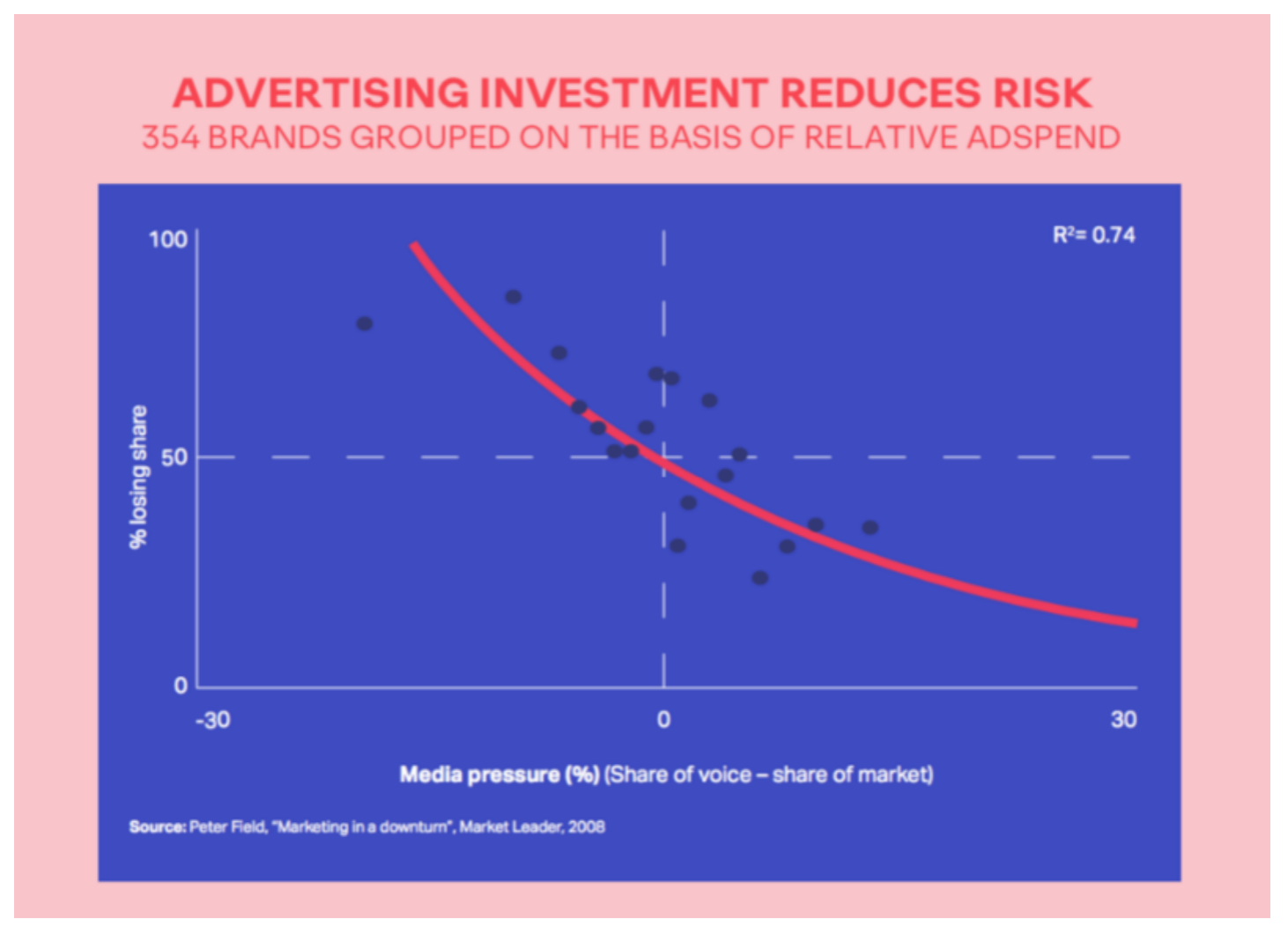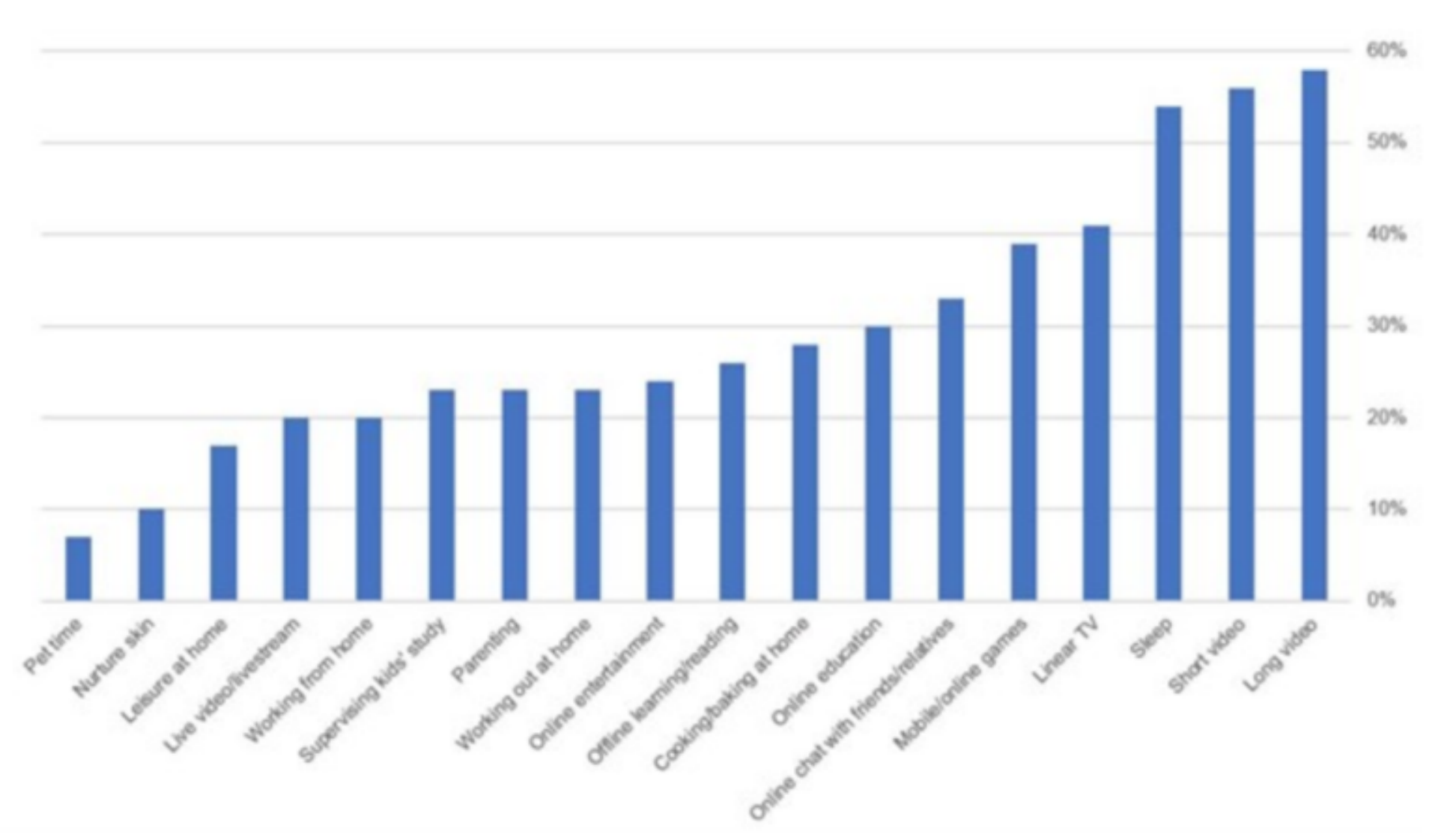Tell your story through video, you can establish a closer relationship with consumers.

The author Nausheen.l Chen, co-founder and director, Shenzhen Yishui Cultural Communication Co., Ltd. Zen & Zany Films.
COVID-19 has thrown all of us in marketing for a loop. To communicate or not to communicate? Should brands hold off on all marketing activities till business seems to be more stable? In times of constricted cash flow and limiting business expenses, marketing budgets often get the first stab of the proverbial cost-cutting knife. But is your brand short-sightedly decreasing marketing efforts and losing brand voice and strength in the process? < / span>
The new crown epidemic really put every company into a marketing bottleneck. Do you want to publicize or need to think twice? Should the brand side postpone all marketing activities and wait for the business to stabilize? In times of tight cash flow and limited fiscal expenditures, marketing budgets usually bear the brunt. However, has your brand reduced its marketing efforts in the short term and lost its voice and influence in the process?

This research, posted by Ogilvy and done by Peter Field on “Marketing in a downturn” shows that if brands decrease their marketing spend, they stand a greater chance to losing their share of voice and share of market.
Ogilvy released a new study-“Market Downturn”, conducted by Peter Field, and the results show that brands are more likely to lose their brand in the market while reducing marketing expenses Voice and status.
The fact of the matter is really simple: your target audience is feeling as, or more vulnerable, as you. That means that they want to hear from you, as a company.
The facts are very simple: your target audience feels like you, even more vulnerable. They even hope to hear the brand’s condolences and voices.
What does it mean for your marketing and your brand message?
What does this mean for your marketing and brand message?
We feel that there is no need to stray from your brand personality, voice and message. If you are a tech brand, you don’t need to be the next BYD, turning your supply chain into mass mask production. But you do need to acknowledge that your audience is facing turmoils of their own: whether they are investors, distributors, partners, stakeholdersor end consumers. And once you acknowledge it, as a brand, then that means you can be in a position to help alleviate their troubles using your own area of expertise.
You do n’t need to deviate from your brand tone, voice and message. If you are a technology brand, you do not have to invest in mass production of masks like BYD. The fact you have to face is: your audience is restless: whether it is investors, distributors, partners, stakeholders or end consumers. Once you are aware of these concerns, you can use the brand’s focus to alleviate their concerns.

Kantar China Insights reports that consumers in China reported spending up to 58% of their time during COVID-19 watching videos. This means that consumers have changed the ways in which they are consuming media. After COVID-19, a lot of consumers are likely to keep the habit of watching more video content. This means you have a unique opportunity, as a brand, to make your brand voice stronger during these times using video.
Kantar China Insights reports that Chinese consumers spend up to 58% of their time watching videos during the new crown. This means that consumers have changed their media consumption. After the new crown gradually stabilizes, many consumers will gradually develop the habit of watching more video content. This means that you have aUnprecedented opportunity-In this special period, more video can be used to enhance the brand’s voice.
Gary V (serial entrepreneur and CEO and Co-Founder of VaynerMedia, servicing Fortune 500 clients) says: “We will be telling the stories of these past few months (during COVID-19) for the rest of our lives”.
Gary V (VaynerMedia serial entrepreneur, CEO and co-founder, serving customers in the Fortune 500) said: “We will tell the stories of the months of the new crown for the rest of our lives.”
You, as a brand, have a story to tell. Now, more than ever. So tell your story through video to connect more strongly with your consumers.
Real question is: what kind of videos should you make to power your growth post COVID-19?
As a brand, you can also tell a story. Opportunity is not as good as telling your story through video, which can establish a closer relationship with consumers.
The question is: after the new crown, what kind of video should you make to drive revenue growth?
The key is to think beyond your product launch video. You probably have a marketing plan in place that you are hoping to get back on track. That will happen, but if you only think of executing your marketing plan pre-COVID- 19, you are missing out on a golden opportunity to speak to your audience in new ways.
The key is, in addition to product videos, what other ideas do you have? You may have developed a marketing plan and hope to get back on track. That will proceed as usual, but if you only consider implementing a marketing plan before the new crown, you will miss the opportunity to talk to your audience in a new way.
Now is the time to create a strong voice for your brand, to stand apart from competition. So, in addition to your regular marketing videos, you should be, as a brand, looking into:
It ’s time to build a strong voice for your brand and make it stand out from the competition. Therefore, in addition to regular marketing videos, you as a brand should also study:
· Sharing your brand story of how you are navigating COVID-19 and learning lessons: create short videos from you and your team on how you are coping so that others can learn and benefit.
-
Share your brand story of how to respond to the new crown epidemic and educational videos: make short videos for you and the team about how to respond to the epidemic so that others can learn and benefit from it
Livestreaming from your frontlines: do a live video from your factory visit to show how your assembly lines are doing. Create a video to showcase how you are testing your product at your office. Think of new ways to showcase your product as well as create value by sharinghow you are working in interesting ways during COVID-19.
-
First-line live broadcast: real-time demonstration video of factory visits to let your customers understand the operation of assembly lines Or you can make a demo video of your product testing in the office. You can consider interesting ways to display your products and share some of your working methods during the new crown to create value.
Create partnerships: This is the best time to strike up new partnerships and collaborations with other brands and products. You can do exclusive video interviews with top thought leaders, or create online video content in partnership with bigger brands to elevate your voice.
-
Partnership: This is the best time to establish a new partnership with other brands and products. You can conduct exclusive video interviews with top thought leaders, or you can work with larger brands to create online video content to enhance your brand’s voice
So how should you get started with creating video content that advances your brand goals and drives growth?
So how do you start creating video content to improve your brand goals and drive revenue growth?
Step 1: Formulate your goals and understand your audience.
Step 1: Set goals and understand the audience.
What do you want your audience to believe after watching this video? Start at the end. Picture the idea scenario: your audience believes EXACTLY what you want them to believe about you. But what is that? That you’re a great company that delivers excellent products? We usually don ‘ t believe vague, general statements. Think specific.
What do you want your audience to think after watching the video? Start from scratch. Imagine: your audience will believe in the ideas you have delivered. But what is that idea? Can you provide excellent products, and the company is strong? We usually don’t listen to such vague general statements. Think about the specifics.
For example, you’ve seen how Alibaba or BYD have stepped up during COVID-19 times: you probably believe that these are companies that care about their employees and also believe in adapting their own tech for the betterment of humanity. You don’t need to do the same: this is just an example of how these companies have created media to make you believe certain things about them.
For example, you have seen that Alibaba or BYD are still advancing during the new crown: you may think that these companies care about employees and will use their own technology to improve human lives. But you do n’t need to do the same thing: this is just an example of how companies create media content to convince their audience.
The trick is to see how your company has been doing something differently during COVID-19, orhow you are adapting to the current situation, or how you can offer a solution to any of the problems that the current situation poses. And then imagine what you want the audience to remember about your solution. That’s your key message.
The trick is to understand how your company does something different during the new crown, how to adapt to the current special situation, and how to provide solutions to the problems that arise in the current situation. Think about the breakthrough point you want your audience to be impressed with by your solution. This is your key marketing message.
Step 2: Develop a multi-platform approach:
Step 2: Create a multi-platform communication form:
Think of all the different platforms that your video can be published on: this helps you choose between different formats: for example, you can livestream on different international and Chinese platforms, and this format is very different from creating scripted videos. On your website or your company’s Linkedin page, though, you will want a more polished, shorter content instead of long livestreams.
Summary of all platforms that can publish video: This will help you choose different content formats: for example, you can broadcast live on different international and domestic platforms, this format is very different from the script video. On your website or company’s LinkedIn page, you need more refined and shorter content instead of a long live broadcast.
Once you start thinking about the different platforms that your video can be used, you will realize how you have almost an infinite number of choices: if you make the right kind of video, you can also edit out different chunks of the same longer piece to use on different platforms. For example, if you create a review with an influencer, you can use parts of the review in blog posts on your website. Then you can link the blog post on your Linkedin page. And use snippets of the influencer review on your Douyin / TikTok and Instagram.
Once you start thinking about different platforms where video can be used, you will realize that there are almost endless options: if you make the right video, you can also divide the same long video into different parts and display them on different platforms. For example, if you have created a review that cooperates with Internet celebrities, you can use the review video to clip different parts and publish them in the blog of the website. Next, you can link blog posts on the company’s LinkedIn page, and at the same time quote the summary of the celebrity evaluation on your Douyin / TikTok and Instagram (a popular foreign social media platform).
Step 3: Decide on the format of the video:
Step 3: Determine the video content format
Understand what tools you may have at your disposal to visualize your brand story:
Understand what tools can be used to visualize the brand story:
• Promo video with actors or real consumers using your product or service
• Explainer video with motion graphics to show how your product or service works
• Videos of your product or service being used in a live environment (user generated content)
• Client or user testimonials
• Corporate video: showing your brand’s history, how it started, milestone achievements
• Interviews with founders / designers
• Cultural video: show your team working, “Behind the scenes” photos and videos
• Case studies of your clients or consumers
• Promotional videos of using your products or services through actors or real consumers
• Video explaining the operation principle of your product or service in the form of dynamic graphics
• User videos of using your products or services on site (UGC user generated content)
• Customer or user recommended commentary video
• Company Promo: Show your brand history, company start-up, milestone achievement video
• Interview video with the founder / designer
• Culture video: Show photos and videos of your team ’s work “behind the scenes”
• Case study video of your customers or consumers
Each of these formats is suitable for certain platforms. Some formats lend themselves easily to an episodic nature-e.g. The life of a Google employee-while some work best as standalone pieces-e.g. corporate videos.
These content formats are suitable for specific platforms. Some content forms have plot characteristics-for example, “The Life of Google Employees.” And some content forms require a complete script-for example, “corporate video”.
Step 4: Create your story / develop the script:
This is where things get interesting.
Step 4: Design your story / creation script:
You know your audience, you understand their needs. Now it’s time to link their needs with what your product or service offers. The real challenge in showing audiences how your product fits into their life , how it simplifies their life, makes it better, makes them who they want to be. It sounds simple but if it’s not well done, it could come across as unimpressionable, unauthentic and even dishonest.
After understanding the pain points and needs of your audience, the next step is to connect their needs with the products or services you provide. The real challenge is how to show the audience how your product fits into their lives, how to simplify their lives, make their lives better, and make them the people they want. This may sound simple, but if it is not done well, it will be counterproductive, and it may become illusory and even leave the impression of being untrue and dishonest to the audience.
Make sure you pay attention to your tone and style: Most consumers want to see honest, friendly and helpful brands. They want authenticity, realness. Ifyou can crack how to show the audience not just beautiful images, but images that they can relate to-videos that they can see themselves in, you’ve won your audience’s hearts.
Watch your tone and style: Most consumers want to see brands that are sincere, friendly, and useful. What they want to see is true. If you can crack this point and show the audience an image that resonates with it, instead of flashy content, with a similar video content direction so that they can see themselves immersive, then you won the favor of the audience.
Step 5: Execute the video project:
Step 5: Perform a video project
Now you have to understand how you would like to execute the project: you have two choices-handling the video in-house or hiring an external resource to create the videos for you. The decision that you make will be influenced by how much budget and time you have. If you have a lot of time and not a lot of budget, you can try to create these videos in-house, especially if someone on your staff knows or is willing to learn how to develop videos. But if you don’t have a lot of time or access to in-house resources, consider hiring a production company that can help you strengthen and execute your vision. Your brand will benefit from the specialized expertise of a video company who knows what they ’re doing and have experience helping brands grow.
Now, you must understand how to execute the project: you have two options-to process the video internally or to hire external resources. The decisions you make will be affected by budget and time. If you have a lot of time but not a big budget, especially when your employees know or are willing to learn how to make videos, you can try to make videos internally. However, if you do not have much time or cannot use internal resources, consider hiring a professional production company that can help you achieve your vision. Your brand will benefit from the expertise of the video company, who knows what they are doing and has the experience to help the brand grow.
This is an extraordinary time for marketing and branding. You, as a brand, need to find your voice in the media chaos: this will enable you to step back and understand better who your brand persona really is, and how to communicate it to your target audience.
This is an extraordinary period of marketing and branding. As a brand, you need to find your voice in the media chaos: this will enable you to take a step back and better understand your brand tonality and how to communicate it to your target audience.
Video is driving growth for brands, period. Get in on the game to power through and beyond COVID-19.
Video is constantly driving brand growth. Invest in this “game” to take full advantage of this special period of opportunity and achieve surpassing.
The original title of this article “How Chinese technology companies use video to promote economic recovery and growth during the new crown epidemic”